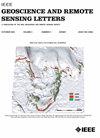Extreme Learning Machine-Based Heterogeneous Domain Adaptation for Classification of Hyperspectral Images
IF 4
3区 地球科学
Q2 ENGINEERING, ELECTRICAL & ELECTRONIC
引用次数: 17
Abstract
An extreme learning machine (ELM)-based heterogeneous domain adaptation (HDA) algorithm is proposed for the classification of remote sensing images. In the adaptive ELM network, one hidden layer is used for the source data to provide the random features, whereas two hidden layers are set for target data to produce the random features as well as a transformation matrix. DA is achieved by constraining both the source data and the transformed target data to share the same output weights. Moreover, manifold regularization is adopted to preserve the local geometry of unlabeled target data. The proposed ELM-based HDA (EHDA) method is applied to cross-domain classification of remote sensing images, and the experimental results using multisensor remote sensing images demonstrate the effectiveness of the proposed approach.基于极限学习机的高光谱图像分类异构域自适应
针对遥感图像的分类问题,提出了一种基于极限学习机(ELM)的异构域自适应(HDA)算法。在自适应ELM网络中,源数据使用一个隐藏层来提供随机特征,而目标数据设置两个隐藏层以产生随机特征以及变换矩阵。DA是通过约束源数据和变换后的目标数据以共享相同的输出权重来实现的。此外,采用流形正则化来保持未标记目标数据的局部几何。将所提出的基于ELM的HDA(EHDA)方法应用于遥感图像的跨域分类,多传感器遥感图像的实验结果证明了该方法的有效性。
本文章由计算机程序翻译,如有差异,请以英文原文为准。
求助全文
约1分钟内获得全文
求助全文
来源期刊

IEEE Geoscience and Remote Sensing Letters
工程技术-地球化学与地球物理
CiteScore
7.60
自引率
12.50%
发文量
1113
审稿时长
3.4 months
期刊介绍:
IEEE Geoscience and Remote Sensing Letters (GRSL) is a monthly publication for short papers (maximum length 5 pages) addressing new ideas and formative concepts in remote sensing as well as important new and timely results and concepts. Papers should relate to the theory, concepts and techniques of science and engineering as applied to sensing the earth, oceans, atmosphere, and space, and the processing, interpretation, and dissemination of this information. The technical content of papers must be both new and significant. Experimental data must be complete and include sufficient description of experimental apparatus, methods, and relevant experimental conditions. GRSL encourages the incorporation of "extended objects" or "multimedia" such as animations to enhance the shorter papers.
 求助内容:
求助内容: 应助结果提醒方式:
应助结果提醒方式:


